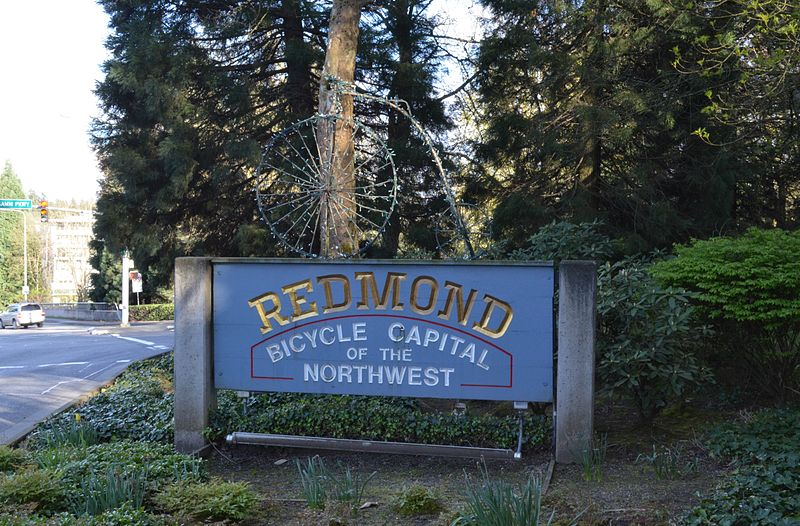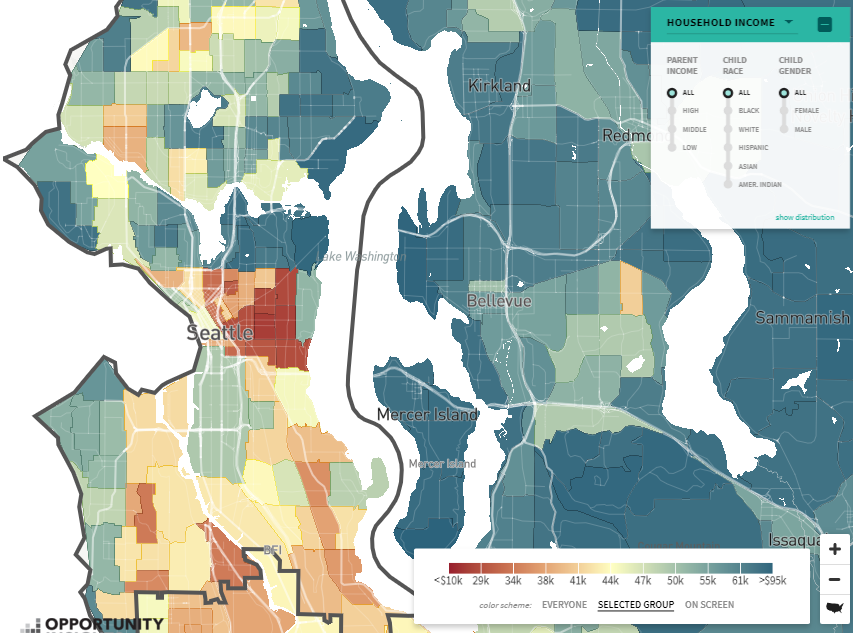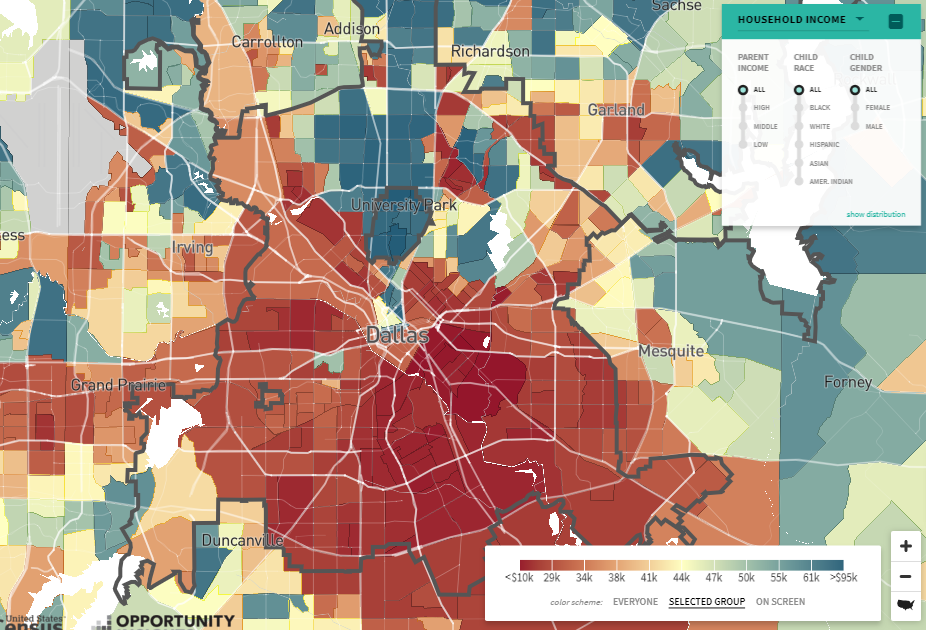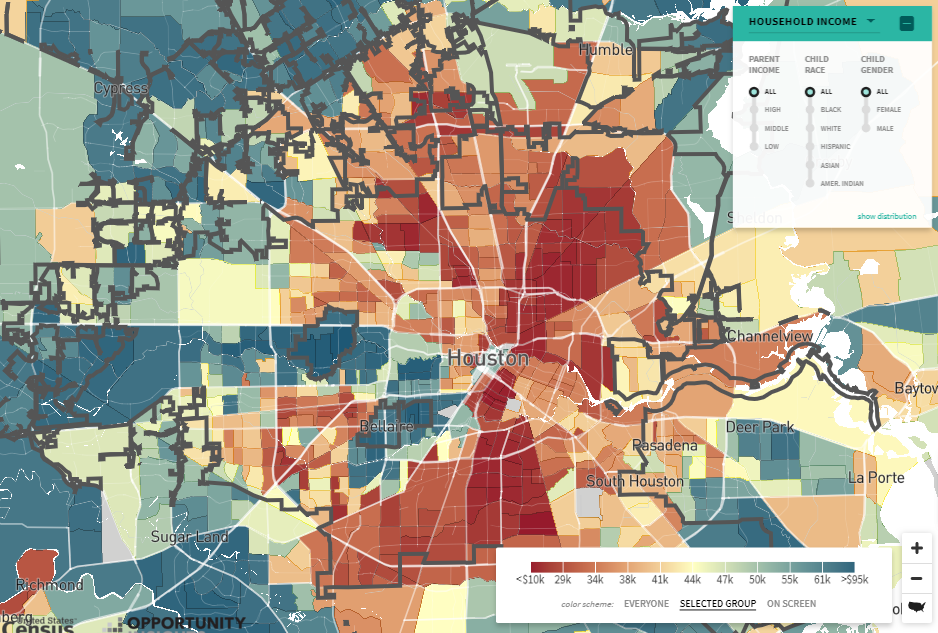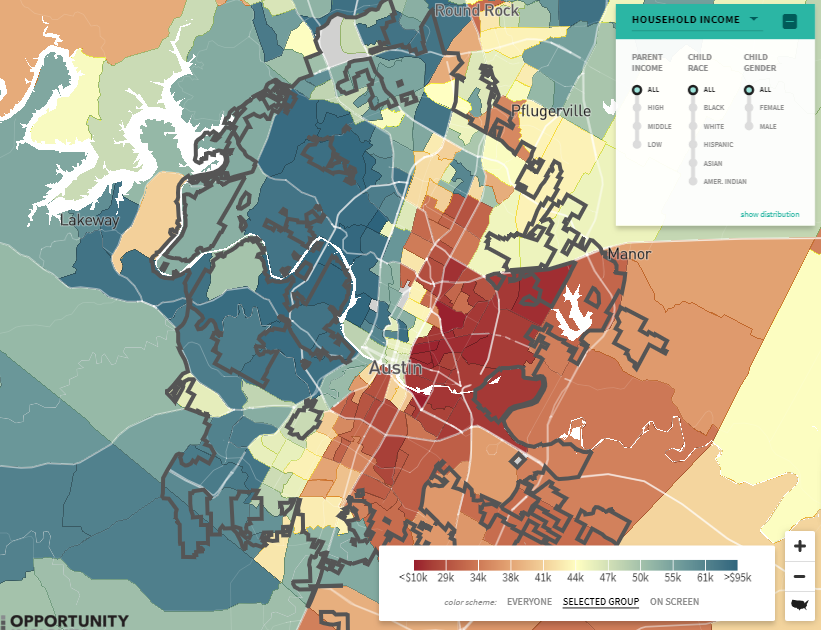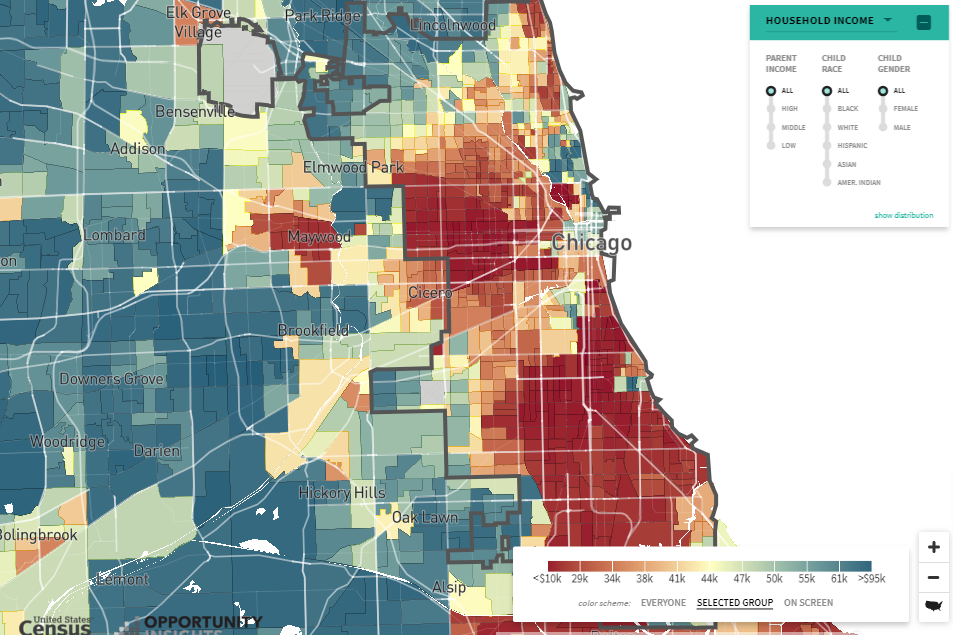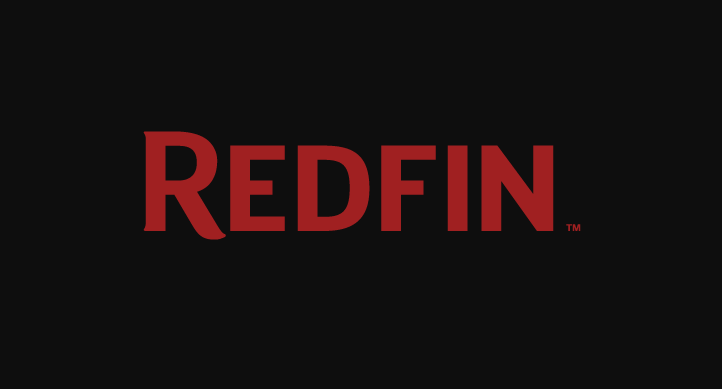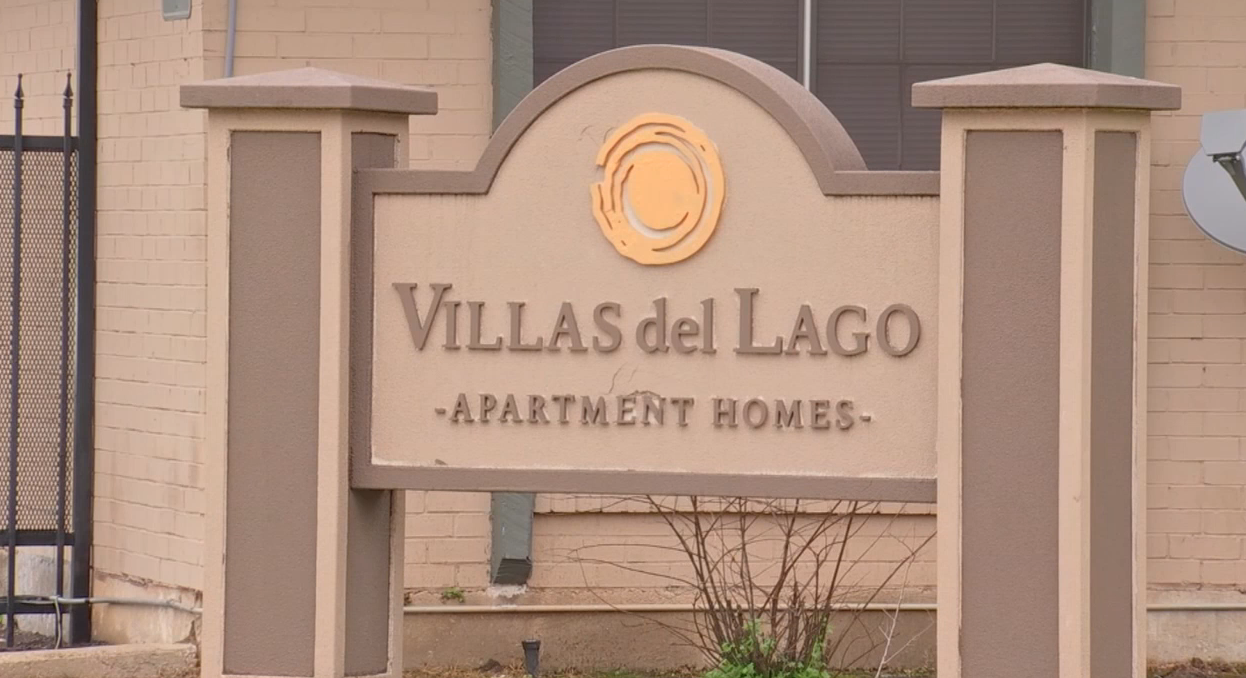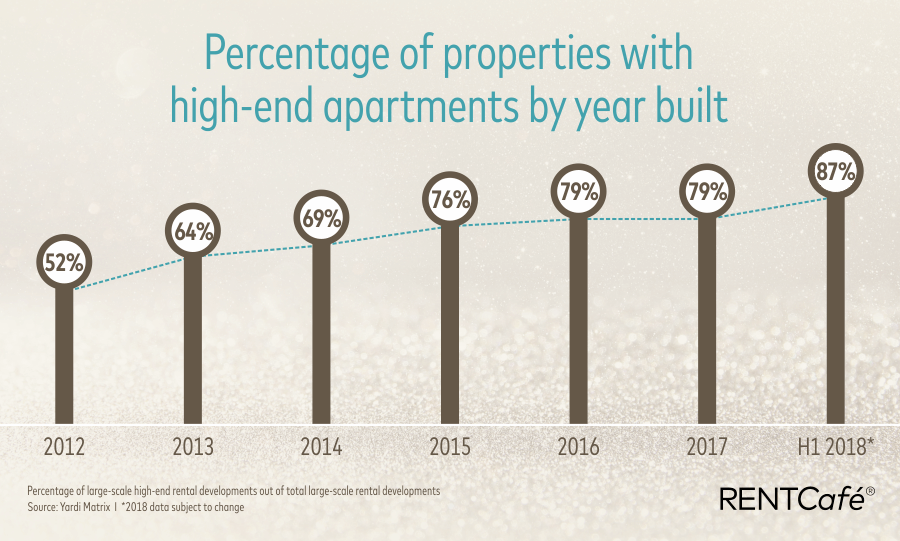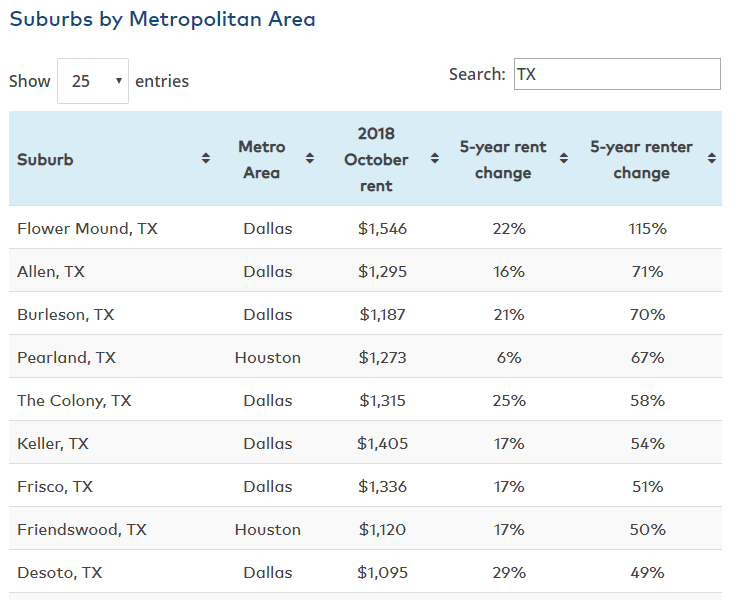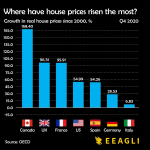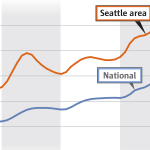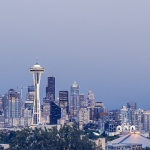Blog
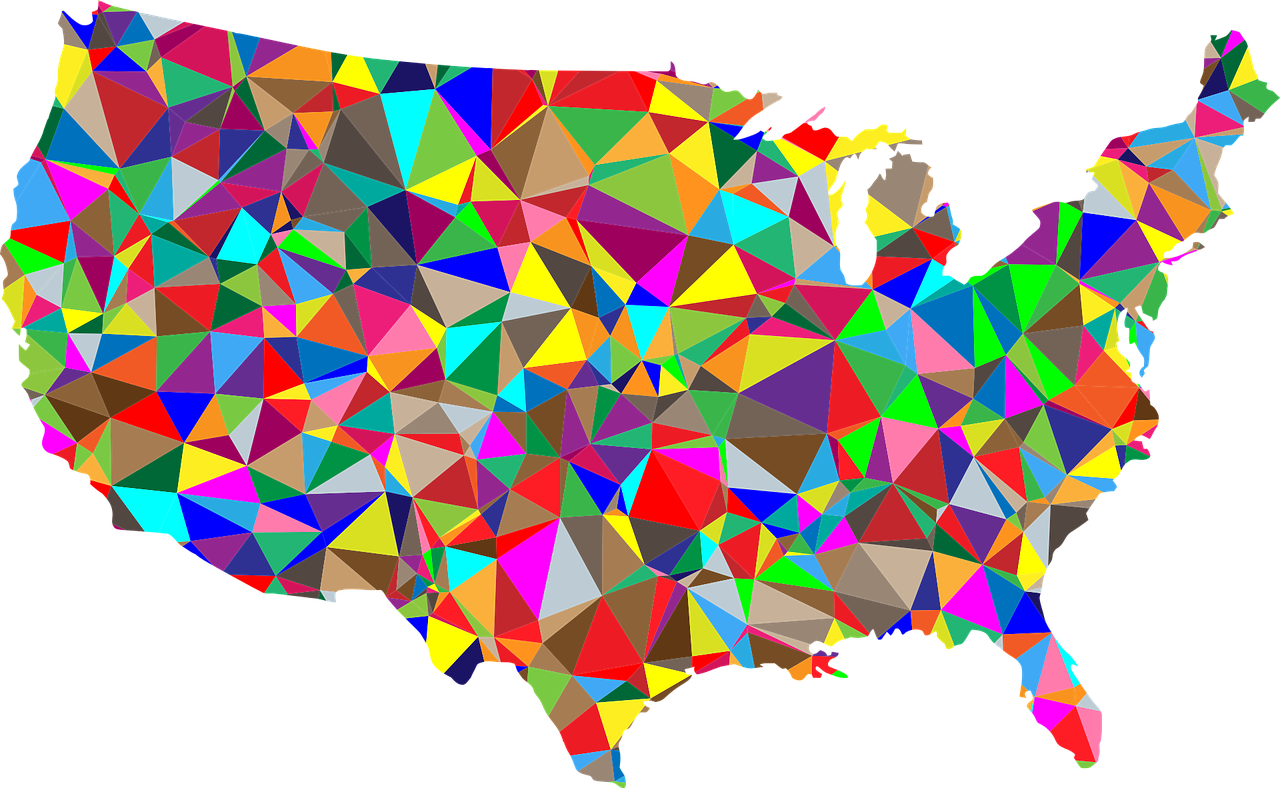
May
Have you ever wondered which cities are up-and-coming and trending? New York, Chicago, Miami, and Los Angeles are the largest major cities in America; however, a couple of these cities—specifically, New York, and Chicago—have a net negative population migration. NerdWallet was able to compile the internal migration data for the entire country. Some of the data, such as with New York and Chicago, may surprise you.
In this article, we’re going to talk about where people are moving from and moving to. We’ll even get into average and owning costs within the cities these people are moving from and moving to. Finally, we’ll detail the methodology that NerdWallet used to put together their information.
Featured Data and Information
Let’s start with the big winners when it comes to population moves: Tampa and Phoenix. These two cities have gone from large to major cities, partly because of the massive influx of new residents. Elizabeth Renter of NerdWallet writes, “the Tampa, Florida, and Phoenix metro areas had the highest share of out-of-state newcomers who were homeowners (41%), compared with an average of 32% among all metros analyzed”.
Tampa has a yearly net migration of 48,905. 147,503 are newcomers to the city and 98,598 people move away, on average. Phoenix, on the other hand, has a yearly net migration of 88,942. 219,938 are newcomers to the city and 130,996 people move away, on average. Clearly, there’s more movement in and out of Phoenix but Tampa has plenty of action as well.
Renting and Owning
The total cost to rent or own is an important factor in choosing to move to a certain area. What’s even more important, however, is the percentage of income needed to rent or own.
Elizabeth Renter writes, “Homeowners with a mortgage spent 18-22% of their household income on ownership costs in most of the metros examined while renters spent 30-33%. In all of the metros analyzed, the median homeowner income was more than twice the median renter income.”
If this were the only data needed, it’s clearly a better decision to own rather than rent. After all, why would someone pay 30-33% of their income on housing when they would only have to pay 18-22%?
Let’s examine some major cities where owning and renting costs the least as a percentage of total income. We can start with the Charlotte Metropolitan Area. Here it costs an average of 18% to own and an average of 29% to rent as a percentage of income. What about the St. Louis area? Here, it costs an average of 18% to own and an average of 30% to rent as a percentage of income. The Minneapolis area is another major city where people are getting their bang for their buck. There, it costs an average of 19% to own and an average of 29% to rent as a percentage of income.
Methodology in Obtaining Data
NerdWallet was able to create a table and a map based on the data they used. The data actually comes from more than one source. Information from the Home Buyer survey, the American Community Survey, the American Housing Survey, and the U.S. Census Bureau was used.
Elizabeth Renter writes, “NerdWallet’s Home Buyer survey was conducted online within the U.S. among 2,029 U.S. adults ages 18 and older by The Harris Poll from Jan. 16-18, 2019. Migration data comes from the 2012-2016 American Community Survey five-year estimates and approximates the number of people who moved for any one-year period within that period. As defined by the U.S. Census Bureau, monthly housing costs for homeowners include all mortgage, home equity loan, real estate taxes, insurance, utility and fuel payments.”
NerdWallet, therefore, used four sources to put together their comprehensive housing and migration analysis.
Lastly, let’s take a look at NerdWallet’s interactive migration map. The following major cities are included:
- Atlanta
- Baltimore
- Boston
- Charlotte
- Chicago
- Dallas
- Denver
- Detroit
- Houston
- Los Angeles
- Miami
- Minneapolis
- New York City
- Orlando
- Philadelphia
- Phoenix
- Portland
- Riverside
- San Antonio
- San Diego
- San Francisco
- Seattle
- St. Louis
- Tampa
- Washington, D.C.
Featured photo by Gordon Johnson on Pixabay
U.S. Migration map is embedded from Nerd Wallet
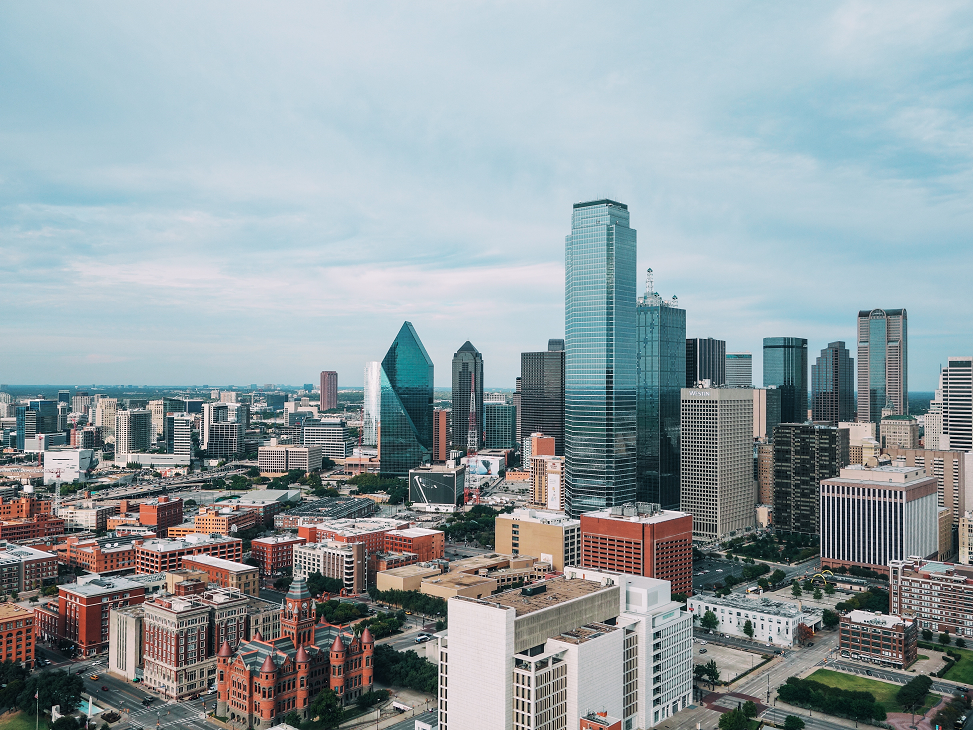
May
Everyone—and their family—wants to live in a nice area. When it comes to major cities, there are good areas and bad areas. Sometimes there are really good areas and other times there are really bad areas. Dallas, being a major city, has all types of neighborhoods—good or bad. Niche did the heavy lifting and detailed the absolutely best neighborhoods to live in around the Dallas-Fort Worth area.
When it comes to the best, there are a few specific factors they take into consideration. These are:
- Public Schools
- Housing
- Good for Families
- Crime & Safety
- Nightlife
- Diversity
In this article, we’re going to examine these six ranking factors as we learn about various neighborhoods surrounding the Dallas area. Together, these factors give an aggregate score, or letter rating, to the neighborhood being graded.
As mentioned before, Niche did the grading for us. The “grade” is essentially an A-through-F score akin to one a student would get in class. Since we’re reviewing only the best neighborhoods, there will be no “F” scores in any of the six ranking factors; instead, we’ll learn about what makes these neighborhoods the best of the best in the Dallas area. And, if you’re considering a move to the Dallas-Fort Worth area, you can use this list to help you choose which neighborhood you’d like to live in, based on the factor that’s most important to you. Let’s get started!
The Top 30 Neighborhoods Around Dallas
This list is quite comprehensive; after all, there are 30 neighborhoods on this list. Here’s why this is important, however: If you’re going to make a major move to a new city, especially a large city, you’ll want to do plenty of due diligence first before choosing which area to live in. That’s where we and Niche come in!
It’s worth noting every neighborhood listed below has an average rating of “A+”. Any of these neighborhoods are great to live in! But, how much can you afford? To help you navigate and zero-in on which neighborhood will be best for you, you might as well start with the price you’re willing to pay. That’s why median home value is listed next to each neighborhood. Keep in mind, however, that even though this is the median home value, there are numerous homes to be found that are either more or less expensive. Here’s the full list of the 30 best neighborhoods to live in around Dallas-Fort Worth:
- Timberbrook – Median Home Value: $291,230
- Preston Highlands – Median Home Value: $181,854
- Canyon Creek South – Median Home Value: $346,091
- Clear Spring Place – Median Home Value: $240,600
- Canyon Creek North – Median Home Value: $291,804
- Heights Park – Median Home Value: $208,979
- Moss Farm – Forest Meadow – Median Home Value: $284,341
- Prestonwood – Median Home Value: $334,665
- Greenwood Hills – Median Home Value: $197,221
- Owens Park – Median Home Value: $236,100
- Arapaho – Median Home Value: $219,211
- Sherrill Park North/Foxboro Addition – Median Home Value: $286,700
- Fairways of Sherrill Park – Median Home Value: $286,700
- Lakeview Heights – Median Home Value: $497,587
- Campbell Green – Median Home Value: $351,861
- Highlands of McKamy – Median Home Value: $167,293
- Liberty Park – Median Home Value: $233,368
- Park Forest – Median Home Value: $217,539
- Lakewood – Median Home Value: $524,348
- Oaktree – Median Home Value: $209,797
- Spring Park – Median Home Value: $270,431
- Caruth Terrance – Median Home Value: $246,890
- Greenland Hills – Median Home Value: $401,259
- Wilshire Heights – Median Home Value: $461,232
- Yale – Median Home Value: $167,655
- White Rock Valley – Median Home Value: $369,756
- University Estates North – Median Home Value: $267,780
- Highland Terrance – Median Home Value: $114,610
- Caruth Hills – Median Home Value: $1,193,614
- Dallas North Estates – Median Home Value: $157,512
Featured photo by Huihui Zhang on Pixabay

Apr
Fight over tiny house homeless villages in Seattle is escalating
Jason C. 0 comments Homeless, Seattle
Seattle has a homeless problem. That isn’t to say other major cities don’t either; however, the homeless issue in Seattle is different. Case in point: Tiny homeless villages, once sanctioned by Seattle, are now excluding Seattle management from entering the area. At what point will the city crack down? And if and when they do, how will they do it? Both the Seattle Times and KOMO News are reporting on these homeless villages.
Who is in Charge?
This is a fight between the founding group and the non-profit case managers of Seattle. The real question is how the facilities should be run. Now, the case managers have been excluded from entering these homeless villages since padlocks have been installed at the entrances.
According to Nickelsville, the founding group of these villages, the non-profit managers are there to make “trouble”.
Scott Greenstone of the Seattle Times writes, “LIHI (Low Income Housing Institute) wants residents of the villages to be required to meet regularly with case managers; Nickelsville does not. The groups are also fighting over who should have the power to kick someone out of a village. Unable to come to an agreement after months of dispute, LIHI cut pay for Nickelsville staff and demanded they turn over rosters, phones, and documents last week.”
It’s clear to see, then, how things are escalating. Also recently, a non-profit manager attempted to visit one of these homeless villages. Someone in the village called the police on the non-profit manager but the manager left before police arrived. Therefore, this begs the question: Who is really in charge of these tiny homeless villages?
A Growing Number of Homeless
The City of Seattle officially sanctioned these homeless villages to help deal with the homeless problem in the city. According to the LIHI, the number of homeless is increasing. Scott continues, in regards to the police being called on the manager, “this is a hiccup in the city’s response to a growing crisis of homelessness, which has over the past four years included opening nine tiny-house villages as an inexpensive, stopgap response.”
The KOMO News had a dreary outlook on the situation. As a matter of fact, they go beyond the homelessness problems with this quote: “Seattle in Dying”. That’s actually the title of the article. And while the KOMO News believes Seattle is dying, in a way, they give recommendations for change that they hope will turn the city around.
“Seattle is Dying” is a short news special or documentary by KOMO News. Eric Johnson writes that the quote is “about citizens who don’t feel safe taking their families into downtown Seattle. It’s about parents who won’t take their children into the public parks they pay for. It’s about filth and degradation all around us. And theft and crime. It’s about people who don’t feel protected anymore, who don’t feel like their voices are being heard.” Eric continues, the documentary is “not a hopeless program. There are ideas and concepts in the show that could start conversations about change.”
Featured photo by Lannyboy89 on Pixabay
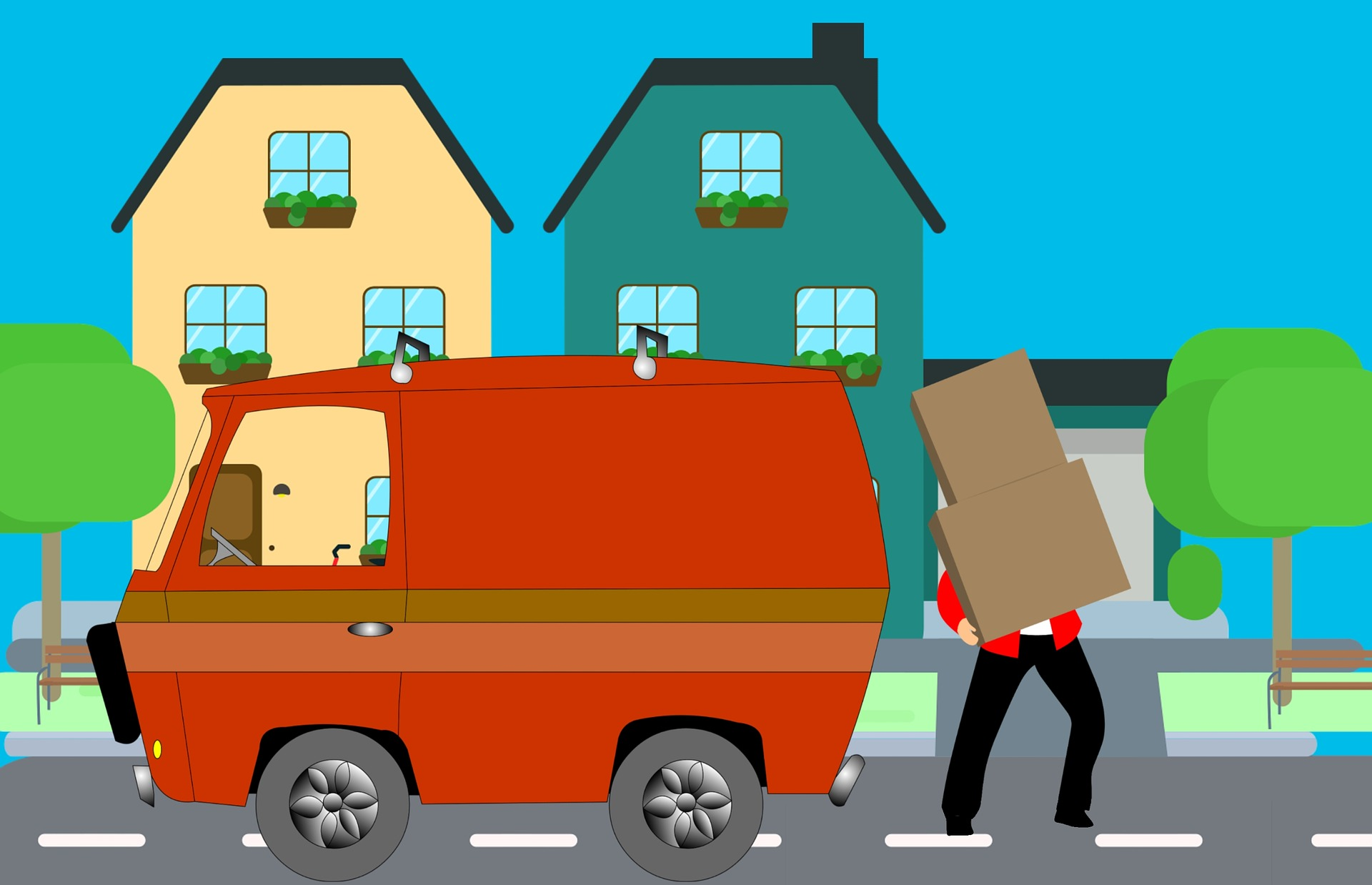
Apr
People are moving to Dallas! If you follow this blog, the reasons aren’t surprising. What is surprising, however, is where the largest group of new arrivals are coming from: Los Angeles. That’s right. And there’s quite a difference in culture between L.A. and Dallas. Another difference, and probably the biggest reason for this migration, is the cost of living between L.A. and Dallas. Both Nerd Wallet and the Dallas Observer reported on these new arrivals to Dallas.
People are Leaving California
There comes a point when people will no longer live in an area of high prices and lower prices are next door. In addition to people migrating from L.A. to Dallas, people are leaving Chicago and New York as well. Nerd Wallet found that Dallas had a net migration of 113,260. Of this, 280,492 were new residents to Dallas and 167,232 residents left the city. Oklahoma City was the top destination for people moving out of Dallas.
Some people, like former Congressman Pete Sessions (Dallas), worry that Dallas and Texas are becoming “Californized”. Stephen Young of the Dallas Observer writes, “Dallas has it so good in Sessions’ mind that liberals are coming here to ruin it.”
But people aren’t coming to Dallas with the main goal of instilling their values; instead, they want a better quality of life. Stephen Young continues, “Dallas’ median monthly housing cost for homeowners was $1,650 per month, about 20 percent of the region’s typical household income for those who own a house. In Los Angeles, the average home cost a homeowner $2,470 per month, about 27 percent of his or her income.”
So there you have it. Moving to Dallas from Los Angles is like getting an automatic 7% increase in income. Why pay $2,470 for housing when you only need to pay $1,650 on average?
Housing costs are worse in Los Angeles for renters. Stephen Young writes, “For renters, housing costs were a bigger burden, with the region’s $1,090 average rent costing the typical renter 28 percent of his or her income, but remained competitive with Los Angeles, where average rental costs were $1,480, or about 35 percent of household income.” Again, we’re seeing that is less expensive to live in Dallas than it is in Los Angeles.
Do you live in Los Angeles and are thinking about moving to Dallas? How much would the move cost you? Head over to our free moving quote for Dallas page to find out.
Featured photo by mohammad_hassan on Pixabay
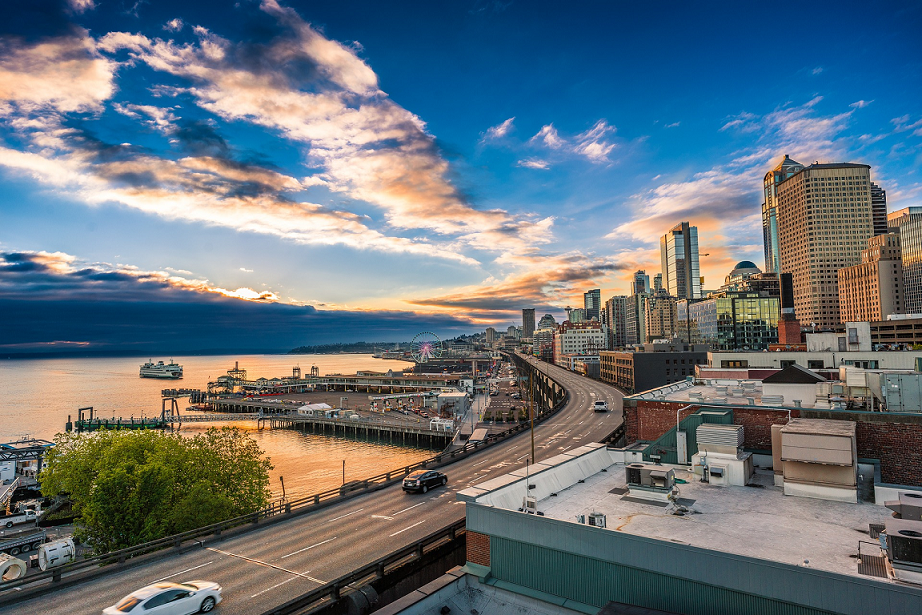
Apr
Let’s talk about Seattle. It’s a large city with a surplus of jobs and great areas to raise families. Niche—a website which showcases the best areas to live, work, and play—revealed their best places to live in the Seattle area for 2019. Where are these places? That’s the focus on this article! Furthermore, we’ll go into detail about the best places around Seattle to buy a house and raise a family as well. Let’s get started!
Top 25 Best Places to Live Around Seattle
Seattle boasts a population of around 725,000. That being said, this major city has numerous suburbs surrounding it. The top 25 places to live around Seattle are:
- Overlake
- Southeast Redmond
- Sammamish Valley
- North Redmond
- Westlake
- Northeast Bellevue
- Bridle Trails
- West Bellevue
- Northwest Bellevue
- South Hollywood Hill
- South Lake Union
- Beaux Arts Village
- Willburton
- Madrona
- Sammamish Plateau
- Grass Lawn
- Education Hill
- Redmond
- Windermere
- Belltown
- Mann
- Lower Queen Anne
- Woodridge
- Union Hill
- Bryant
Let’s look a little closer at why some of these cities make the list!
Redmond, Washington (#18)
It’s interesting to note that there are three “Redmond’s” on the list. They are Redmond, Southeast Redmond, and North Redmond. Redmond is home to Microsoft and Nintendo of America, among other popular companies.
According to Niche, “living in Redmond offers residents a suburban feel and most residents own their homes. In Redmond, there are a lot of restaurants, coffee shops, and parks. Many families and young professionals live in Redmond and residents tend to lean liberal. The public schools in Redmond are highly rated.”
Redmond has a population of 60,712 and has a median home value of $579,400. That is quite high; however, the median household income is $115,300 which is just over double the national median household income.
Sammamish Valley (#3)
Sammamish Valley is rated “A+” by Niche. Its median home value is $466,806 and has a much smaller population than Redmond. Sammamish Valley only has 11,316 residents.
According to Niche, “Sammamish Valley is in King County and is one of the best places to live in Washington. Living in Sammamish Valley offers residents a suburban feel and most residents rent their homes.”
The city is also rated “A” for diversity, “A-” for housing, and “A+” for public schools. Not bad! Next, let’s check out the top city: Overlake.
Overlake (#1)
Overlake is the number one best place to live in the Seattle area. Why? Is it because of the great schools? What about the diversity or low crime rate? Is Overlake good for families? The answer to all of these questions is a resounding “yes!”.
According to one reviewer on Niche, “There are many opportunities for youths to be active. There are multiple hospitals in the area that are very nice visually.” Having numerous hospitals in an area is important and something that Niche hasn’t talked about. We’re glad the reviewer mentioned it! Another reviewer said, “There are fairly few crimes but many police to make the area feel extra safe.” A low crime rate is a top priority for families looking to move to a new area.
Overlake is rated “A+” by Niche. The city has a population of 16,480 and the median home value is $539,609. The median rent is $1,641, which is right around double of the national rate for rent. The median household income in Overlake is $133,691. Not bad! Compare this with the median national household income: $55,322. So, the median household income in Overlake is more than double than average household income on a national scale.
Are you interested in moving to the Seattle area? Get a free moving quote to see how much it will cost you!
Featured photo by Infinite Thought on Pixabay
Redmond photo by Wikimedia Commons
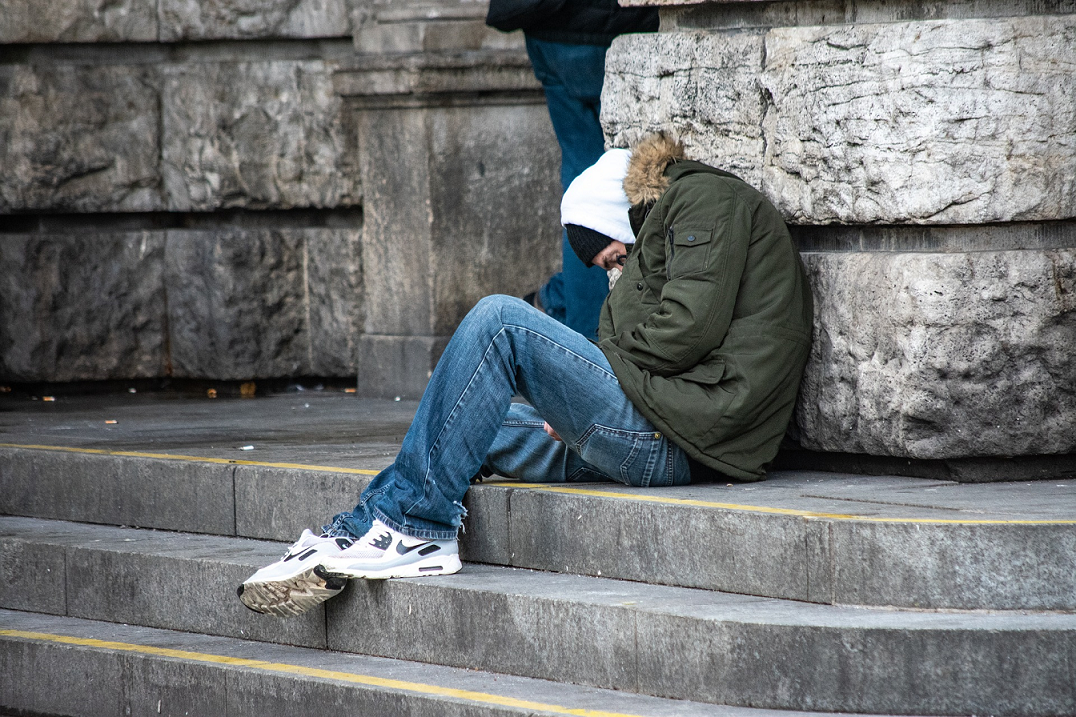
Apr
Does it matter where you grow up? More specifically, are the same economic opportunities available to all Americans, no matter where they were raised? There’s new evidence that’s able to answer these questions. The Opportunity Atlas essentially puts the roots of poverty on the map.
As an introduction, they state, “The Opportunity Atlas answers this question using anonymous data following 20 million Americans from childhood to their mid-30s. Now you can trace the roots of today’s affluence and poverty back to the neighborhoods where people grew up. See where and for whom opportunity has been missing, and develop local solutions to help more children rise out of poverty.”
They then prompt you to explore cities around the U.S. In this article, we’re going to take a closer look at 5 major cities: Seattle, Dallas, Houston, Austin, and Chicago. Let’s get started!
Seattle
Take a look at the map above. The main colors here are red, white, blue and shades in between. The colors indicate household income over the course of one year. The redder the color, the less money the family makes. The bluer the color, the more the family makes. And, white is essentially the median income in the area. This goes for all maps you’ll look at in this article.
A quick glance at the map shows that the worse parts, income-wise, is right in the heart of Seattle. This doesn’t make that there are no high-paying jobs there. Instead, as mentioned before, it’s the median income for all families living within a certain area.
Dallas
There’s quite a bit more red in Dallas than there is in Seattle! The good thing, however, is that the cost of living is generally lower in Dallas than it is in Seattle. Venture out to University Park and Forney, among other cities, and you’ll realize areas of higher family median income.
Houston
The colors of Houston look very much like those of Dallas. I’d venture to say, however, that it appears Houston has more blue areas. The inner city to the north and south are quite red. West of the city looks very blue, especially around Sugarland and Bellaire. To the west, cities like Deer Park have a higher household income.
Austin
Austin, like you’ll see next with Chicago, looks like night and day when it comes to areas around the city. To the west, it’s mostly blue. To the east, it’s mostly red. Think about the kids growing up to the west and to the east. Do they stay in those areas when they grow up, and make the same or a similar amount of money as their parents did?
Chicago
Chicago, to the immediate west and south, is very red. Maywood is also red. Speaking of Maywood, the area has a very high crime rate. You might be wondering why the east side of Chicago is all white. It’s not because the area is full of average or median income households. Instead, that’s where Lake Michigan is!
Featured photo by Useche70 on Pixabay
Map photos are screenshots by RPS Relocation
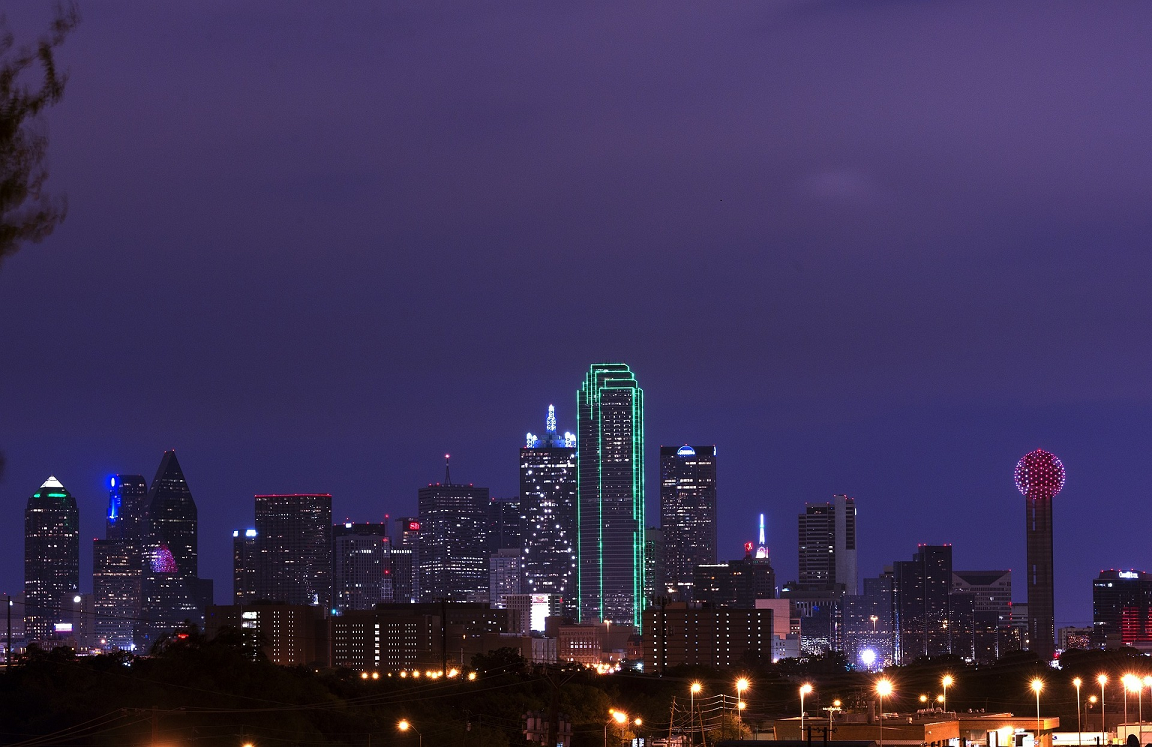
Apr
Is it easy for you to keep your home “show-ready” when it’s on the market? Do you want potential buyers to walk through your personal spaces with a realtor when you’re not home? If the answer to these questions is “no”, you might want to consider a new program from Redfin: RedfinNow. This program, a direct home buying service, is coming to the Dallas area. HousingWire shares what this program is and what it might mean for you.
Beginnings and Expansion from California
RedfinNow began operations in Southern California in early 2017. Ben Lane of HousingWire explains how RedfinNow works. He writes, “Through RedfinNow, homeowners can get a no-obligation cash offer for their home. If they accept, they can pick their move-out date, and then Redfin turns around and sells the house back into the market.”
It sounds simple: Homeowners receive a no-obligation quote and can move out whenever they please if they accept. Who wouldn’t want to try out this service? We assume RedfinNow has been successful so far because they’ve expanded their program from Southern California to San Diego.
As a matter of fact, RedfinNow recently announced they’re expanding their program to the Dallas-Fort Worth area. They even started buying homes already, albeit quietly, possibly to test the market. They actually bought six homes in December 2018. Searching for a Dallas-based home address on RedfinNow will net the following response: “Sorry, we can’t make an offer on your home right now. According to our records, this property is in an area that we don’t currently serve.” Stay tuned.
Ben continues that RedfinNow will be “opening a new office in the growing northern suburb of Frisco. Along with continuing to grow its local brokerage business and Redfin Mortgage, the company’s Dallas-based mortgage operation, Redfin will also hire engineers in Dallas.”
Redfin also owns a title and settlements company called Title Forward. Title Forward will be hiring new staff and expanding operations in the Dallas-Fort Worth area as well. It seems Redfin, along with its partners, are creating an all-in-one home buying and selling ecosystem!
How RedfinNow Works
There’s more to RedfinNow than buying and selling your home. What does it actually mean to homeowners? What’s the catch? Yes, there are fees; however, there are a myriad of fees that also come with the traditional route of buying and selling a home through a real estate agent. Let’s see what RedfinNow offers.
Ben writes, “RedfinNow charges a service fee of 7% to buy the home directly from the homeowner. Redfin typically charges sellers a 1% listing fee on a traditional listing.” It’s important to understand that the 7% service fee is essentially a real estate agent fee and a Redfin listing fee combined. A traditional real estate agent fee is normally anywhere between 4-6%. There are some added benefits to choosing RedfinNow. They are:
- No seller concessions
- No estimated listing preparation
- Quick closing time
- No home preparation
- Only one home showing
These are important factors that homeowners should consider before deciding which method they’ll use to bring their home to the market.
With the traditional route, it’s not out of the ordinary for homes to sit on the market for days, weeks, or even months. In addition, it may take up to 30 days to close. RedfinNow is different. You’ll get your offer and you can be out within 7-60 days. Imagine contacting RedfinNow and being out of your home within a week or two! That’s especially exciting if you receive a great offer from them.
The Selling Process and FAQs
RedfinNow exists in part to make selling your home and seamless process. That’s why there are only 4 main steps from contacting them to getting your cash. The steps are:
- Request an offer online
- RedfinNow assesses your home and makes an offer (within 48 hours)
- RedfinNow arranges an inspection
- Close the deal and get paid
It couldn’t be easier than that. There’s only one downside to choosing RedfinNow, they don’t negotiate (or at least they say that don’t) on their offer. But that doesn’t mean you can’t try! With a traditional sale, buyers and sellers normally negotiate and make concessions so that a proper deal can be made to make both parties happy.
Let’s take a look at a couple of questions and answers that RedfinNow provides.
After you request an offer online, RedfinNow will send an agent out to assess your home. What is that for? According to them, it’s to learn firsthand about the condition of your home, taking into consideration any improvement or updates you’ve done. The visit is brief and normally only takes about 30 minutes. That sure beats having “X amount” of potential home buyers visiting throughout the days and weeks the home in on the market!
RedfinNow makes an offer within 48 hours of assessing your home. How long is this offer valid for? According to them, the offer is valid for 7 days. That should be enough time to decide if you want to take it or not! If you still need more time, however, you can get a new offer from RedfinNow. It may be different—better or worse—than the offer you received before based on current market conditions.
While RedfinNow isn’t officially active in the Dallas-Fort Worth area, the company is likely to begin operations within the near future. If you’d like to get a quote from them, they advise you to contact them directly until they go fully live.
Featured photo by Skeeze on Pixabay

Mar
Villas del Lago Apartments in Dallas are Plagued Daily by Rats According to Tenants
Jason C. 0 comments Dallas
If you’re moving to Dallas, here’s an apartment complex you might want to avoid: Villas del Lago Apartments. Usually, any establishment with less than three stars on Google Reviews should be avoided. The Villas del Lago Apartments is no different. The complex currently sits at a dismal 2.1 stars as of this writing as there’s a good (or bad!) reason for it. The apartments have become overrun by rats. Telemundo 39 (and reported by NBC DFW) visited the apartments for a firsthand account of the story. Let’s see what they found!
Rats Here, Rats There, Rats Everywhere
Are you looking for rats? Look no further than the Villas del Lago apartment complex. You’ll find them in the bathtub, in the walls, and in the ceilings. This is horrifying but it isn’t even the most shocking part of the story. Here it is: Tenants say the management isn’t doing anything about it!
Jose Campos and Gilberto Dorrego write, “Barbara Acosta, who lives at the Villas del Lago Apartments, contacted our sister station Telemundo 39 to report this issue. Cell phone videos recorded by Acosta showed rats coming out of her bathroom ceiling and even some that were on mousetraps.” When Acosta showed this evidence to Telemundo 39, the reporters decided to pay the apartment complex a visit.
Villas del Lago Apartments Management
The reporters from Telemundo 39 couldn’t figure out why this was happening so they reached out to management. They wanted to get to the bottom of the story.
Jose Campos and Gilberto Dorrego continue, “Telemundo 39 reached out to the property manager, who initially told us that they are spraying for pests every Thursday. However, it took several days for us to get a response regarding the specific conditions that Acosta was living in.” While management is taking some action, it doesn’t seem to be working. This is made apparent every time another rat chews its way out of a ceiling.
Confronting the Apartment Owners
Can more be done to combat the rat infestation? The management of the Villas del Lago apartments aren’t the only ones in charge. The buck stops with the actual owners of the complex. So Telemundo 39 moved to confront them. They found that a private company—Overmore LLC—owned Villas del Lago. The reporters knew what they had to do next: They had to get in touch with a manager of Overmore LLC.
Jose Campos and Gilberto Dorrego met in person with Noel Yi. They write, “He stated that on December 2018, they sprayed some of the units that reported the presence of rats. However, two months later, the rats came back to Apartment 303 and from there, they started to see other units become affected.” Noel continued saying that Overmore LLC contracted the managing of the complex to DFW Home. That’s where the investigation ends, for now.
The City of Dallas Investigates
Jose Campos and Gilberto Dorrego did one more thing before letting this story go: They contacted the City of Dallas to let them know of the horrid living conditions at the apartment complex.
Shortly thereafter, city inspectors visited the property to learn about the rat problem and what’s been done to alleviate it. Here’s part of the City of Dallas’ statement regarding the Villas del Lago apartments: “At this time, our Community Prosecution Team has notified property ownership and property management of the outstanding health and safety violations … Specifically, two inspections were conducted this week related to the reported infestations. City inspectors observed progress towards remediation of the infestation, as well as property management’s attempts to accommodate the affected tenant.”
The “affect tenant” in this story, recall, is Barbara Acosta. Apartment management moved her to another unit within the complex that doesn’t have a rat problem. Unfortunately for Acosta, if she wanted to leave the complex altogether, she would be fined $575 for breaking her lease.
Bad Google Reviews
Acosta isn’t the only tenant complaining about the Villas del Lago apartments. Plenty of current and former tenants took to Google Reviews to express their frustrations with the complex. Let’s see what they have to say.
Local Guide Oliver Hernandez says rats aren’t the only problems within the complex. Drugs and crimes are issues as well. He writes, “Worst place to [live]. My friend [lives] there and he is moving because 3 trucks have been stolen from him. They sell drugs and there’s a lot of crime.” Oliver gave the Villas del Lago apartments one star.
A tenant going by the alias “Geometry dash Dude” has another type of complaint: no hot water! He writes, “If you like taking cold showers in the winter time, live there, if you like rats live there, I don’t recommend. NO HOT WATER…”. Geometry dash Dude gave the Villas del Lago apartments one star.
Rats, drugs, crime, and no hot water are terrible things. But wait: there’s more! Bad customer service also seems to be a feature of the Villas del Lago, based on a review from Geno Marley. Geno writes, “Horrible customer service. Ladies in the office extremely lazy never fall through with what they’re gonna do, have to keep checking behind them like they’re children. Asked for corporate number, got told property manager would have to contact corporate in order for her to give me the number.” Geno gave the Villas del Lago apartments (you guessed it) one star.
After reading these, you might wonder how they have an average score of 2.1 on Google Reviews. We wonder that as well! While most of the reviews are one-star, there are a few five-star reviews as well. We won’t cover those because taking everything into consideration, this doesn’t seem like a five-star apartment complex. Feel free to read the rest of their Google Reviews here.
There are actual five-star apartments in Dallas. And there are plenty of them! Next, read our post “Most New Apartment Buildings in the USA Are Considered High-End” to learn that almost all of new apartment complexes in Dallas are high-end and luxurious!
Featured photo by DSD on Pexels
Villas del Lago sign is a screenshot of NCBDFW video report by RPS Relocation
Google Reviews photos are screenshots by RPS Relocation
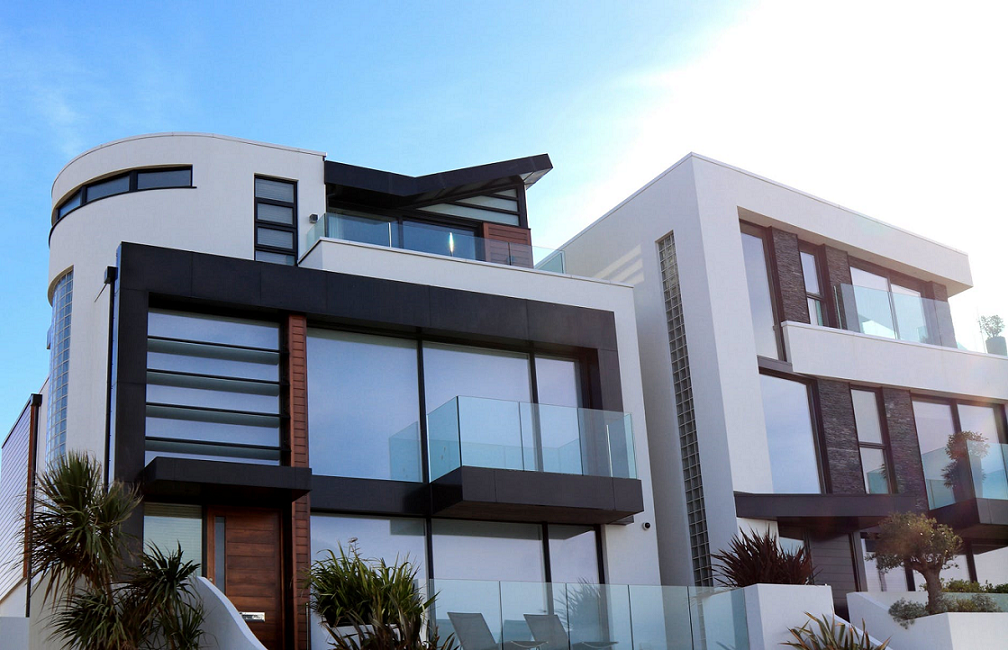
Mar
Most New Apartment Buildings in the USA Are Considered High-End
Jason C. 0 comments Dallas, Data Visualization, Seattle
Good news for renters: Most new apartment buildings in 2017 are considered high-end. This trend continued in 2018 and will likely be a feature of new apartment complexes in 2019 as well. RENTCafé put together the numbers and even went city-by-city to show how luxury apartments are taking over. Let’s see what they found!
The Trend is Luxurious
Nadia Balint of RENTCafé writes, “Encumbered by high construction costs and encouraged by a surge in demand for rentals, developers have bet big on luxury apartments. Back in 2012, high-end properties represented about half of all newly completed construction, but now these projects occupy the lion’s share of the multifamily industry. Of the 1,600 large-scale apartment buildings completed in 2017 in the U.S., 1,270 (or 79%) classify as high-end properties”.
To put this into better perspective, let’s take a look at the percentage of properties with high-end apartments by year built. They are:
- 2012: 52%
- 2013: 64%
- 2014: 69%
- 2015: 76%
- 2016: 79%
- 2017: 79%
- 2018: 87%
And there you have it. The percentage of new, luxury apartments can’t get much higher than that! Let’s take a look at a visualization of this growth in luxury apartments. Check out the photo below.
Dallas, Seattle, and Las Vegas
The percentage of new, high-end apartment buildings can’t get much higher than 87%. But they can in Las Vegas! Nadia Balint continues, “The luxury market is also thriving in Las Vegas metro — where 100% of the apartments built in 2017 were high-end — boosted by Californians moving to Vegas in greater numbers and the area’s great economic outlook.”
The luxury apartment market is thriving in Dallas-Fort Worth and Houston as well. In Dallas-Fort Worth, a massive 98% of all new apartment buildings were high-end in 2017. Houston was just behind Dallas-Fort Worth. In 2017, 97% of their new apartment building were high-end.
Seattle wasn’t very close to Las Vegas, Dallas-Fort Worth, or Houston; however, the percentage of new, luxury apartment complexes isn’t bad their either. Case in point: 67% of the construction of new apartments in Seattle were high-end in 2017. In 2018, that number stayed the same. Back in 2015, however, the percentage of high-end, new apartment buildings was 72%. This is a slight decrease but it’s nothing to worry about if you’re a luxury apartment developer.
Methodology of Collecting the Data
How did RENTCafé get these numbers? How did get put together visualization above? The data comes from Yardi Matrix which, by the way, is RENTCafé’s “sister company”.
To define what’s luxurious or not, Yardi Matrix makes use of discretionary and high mid-range asset class categories. It’s important to note that “The regions and metro areas included in this report are defined as per Yardi Matrix’s market boundaries and may be different from the regional boundaries and metropolitan statistical areas as defined by the U.S. Census.”
Moving to Dallas, Seattle, or Las Vegas
Are you interested in moving to one of these cities? Are you a renter or plan to rent once you get there? Good news! You’ll be able to live in one of these new, luxurious apartment complexes if you want to. Allow RPS Relocation to help you started on decided to move.
Get a free moving quote for Dallas, Seattle, or Las Vegas today!
Featured photo by Expect Best on Pexels
Luxury apartment photos from RENTCafé are screenshots by RPS Relocation
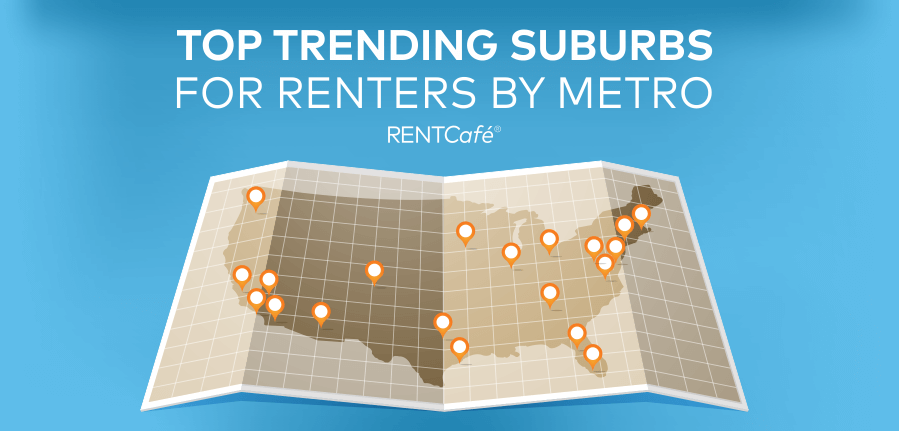
Mar
There are areas of the country that are hotter than others when it comes to the real estate market for renters. Texas, especially the Dallas area, has some of the most popular up-and-coming suburbs for renters. These suburbs have been listed and ranked by RENTCafe. It’s important to note that the data is based off changes in the renter population from 2011 until 2016. Let’s see what they have to say!
Suburban Versus City Life
The author of the article, Florentina Sarac, noted that living in the suburbs isn’t necessarily as exciting as living in a major city. Within suburbs, attractions are often spread of distances. In cities, however, so many things seem to be within walking distance or at least have close relative proximity.
That being said, people are flocking to suburbs. Why? Florentina writes, “Renting in the suburbs tends to be more affordable, generally, and who doesn’t like the idea of paying less for more space? In addition, suburban public schools are often better than inner city schools, and there’s no match for the sense of community, especially if you’re raising a family.”
Trending Texas Suburbs
RENTcafe listed 20 of the hottest suburbs people are moving to. Of the 20, Texas showed up on the list 5 times! Here they are:
- Flower Mound, TX (#3; Dallas metro)
- Allen, TX (#8; Dallas metro)
- Burleson, TX (#9; Dallas metro)
- Pearland, TX (#11; Houston metro)
- The Colony, TX (#19; Dallas metro)
It’s worth noting that 4 of the 5 suburbs in the Dallas area. Dallas is booming! Furthermore, to get more specific, Burleson is actually closer to Fort Worth. Still, the area is the current trendsetter for the state when it comes to the real estate market for renters.
Let’s take a closer look at each of these suburbs to get an idea of why they are so popular.
Flower Mound, TX
- Renter Population Increase: 115%
- 5-Year Rent Change: 22%
- Average Rent: $1,546
- Average Rent in Dallas: $1,181
- Renter Income Change: 5%
Allen, TX
- Renter Population Increase: 71%
- 5-Year Rent Change: 16%
- Average Rent: $1,295
- Average Rent in Dallas: $1,181
- Renter Income Change: 4%
Burleson, TX
- Renter Population Increase: 70%
- 5-Year Rent Change: 21%
- Average Rent: $1,187
- Average Rent in Dallas: $1,181
- Renter Income Change: 9%
Pearland, TX
- Renter Population Increase: 67%
- 5-Year Rent Change: 6%
- Average Rent: $1,273
- Average Rent in Houston: $1,091
- Renter Income Change: 8%
The Colony, TX
- Renter Population Increase: 58%
- 5-Year Rent Change: 25%
- Average Rent: $1,315
- Average Rent in Dallas: $1,181
- Renter Income Change: -4%
Texas Suburb Growth Chart
There’s more market growth in Texas! As you can see in the chart above, our top 5 suburbs—Flower Mound, Allen, Burleson, Pearland, The Colony—are already listed. In addition to those, RENTCafe listed even more of the trending cities in the state.
Coming in right after The Colony is Keller, TX, which saw a 54% increase in renters (compared to The Colony’s 58%). Then we have Frisco (51% increase), Friendswood (50% increase), and Desoto (49% increase). To view more trending cities, head over to RENTCafe.
One more important thing to note is this: 4 out of the top 5 cities are suburbs of Dallas. 1 is a suburb of Houston. Looking at the chart, this trend continues. Most of the cities are suburbs of Dallas and one more (Friendswood) is a suburb of Houston.
Are you interested in moving to the Dallas area? Find the best Dallas Moving Companies!
Featured photo is a screenshot of RENTCafe by RPS Relocation
Texas suburb growth chart photo is a screenshot of RENTCafe by RPS Relocation

